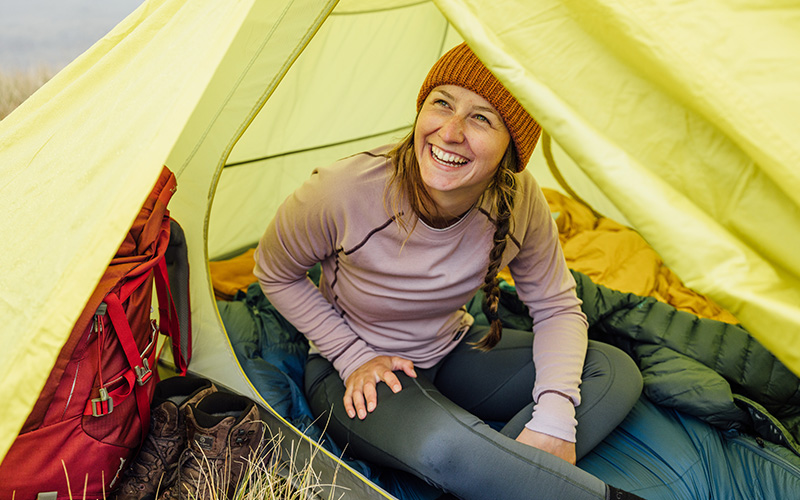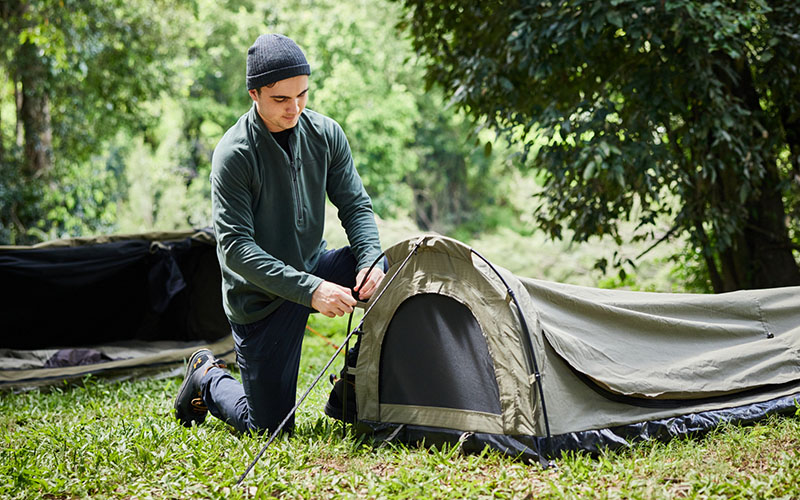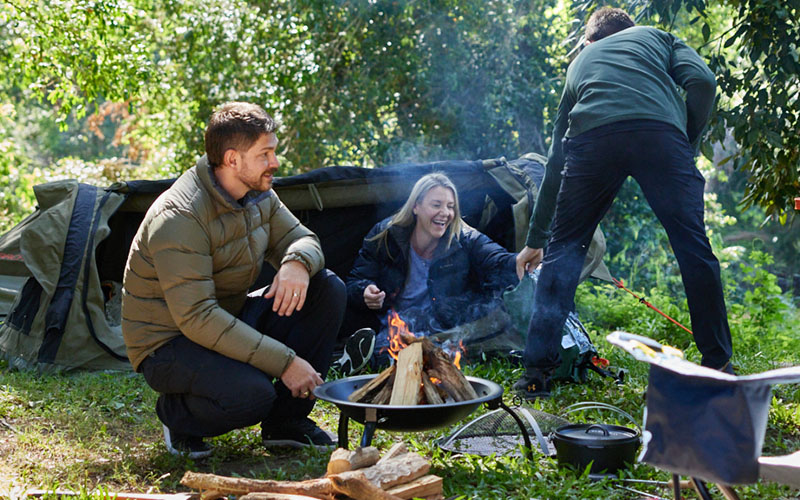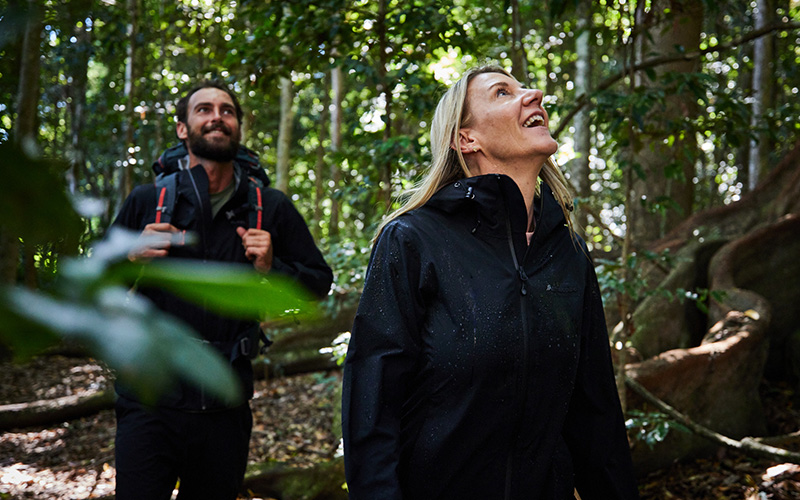With the cold of winter about to knock on our doors, it’s almost time to hang up the singlets and shorts and dust off the old trackie dacks. Warm clothes are an absolute winter essential, especially when it comes to camping where the clothes you bring along can either make or break your trip. Layering up is one way to ensure that you stay comfortable in the outdoors no matter the temperature, and while it’s easy to whack on a t-shirt and a couple of jumpers and call it a day, there’s a little more to consider when it comes to effective layering. In this guide the BCFing experts will be diving into all things layering so that the only thing you’ll need to worry about is making sure your jumper’s zipped up nice and tight.
Layers
When we talk about different ‘layers’ there are generally three main ones:
- A thermal or base layer
- An insulating mid-layer such as a fleece
- An outer layer that has the right amount of waterproofing and breathability for your chosen activity

BASE LAYER
The base layer is the closest layer to the body and plays a massive role in regulating your body’s temperature. ‘Thermals’ as they’re more commonly known have come a long way from the long johns that your grandparents used to wear and now come in a selection of fabrics and lengths to suit a variety of conditions and activities. This means that whether you’re trekking up a mountain in the heat of summer, or braving the cold on an icy snow trip, a thermal layer will be a huge help in making sure you stay at the perfect temperature. Acting almost as a second skin, thermals will wick away sweat and moisture to leave you feeling comfortable and dry. If you’re in the market for a new set of thermals there are two fabrics that you should know about that each have their own benefits – merino wool, and polyester.
Merino thermals
Merino wool is as close as you can get to being the perfect material for a base layer. Coming straight off the back of the merino sheep, this natural fibre is super comfortable and most importantly, warm! It’s also better at regulating body temperature than your brand spanking split system and naturally wicks moisture away from your body, ensuring you stay practically dry as a bone. The very best part though, is that it has natural anti-bacterial properties. Put simply, you can get a couple wears out of these thermals without stinking out the campsite.
Polyester
Polyester or 'poly' thermals are lightweight and breathable, plus they won’t burn a hole in your back pocket. The Macpac geothermal range is an epic example of a poly thermal that'll help you win winter. Although merino comes with a long list of benefits, it also comes with a pretty hefty price tag. If you’re chasing a quality pair of thermals that can keep you snug as a bug while also helping you save a couple of bucks, poly thermals are the way to go. They pack up easy and will ensure you have a great night’s sleep in the chilly weather.

MID-LAYER
The mission of the mid-layer is simple – to keep in that warm air that your body’s worked so hard to produce, while stopping everything from getting too hot in the process. This layer is responsible for insulating and can be made of any number of materials. Fleece and wool are two fabrics to look out for that will not only ensure you stay nice and toasty but will also be remarkably breathable. If you want to stay nice and warm without too much extra bulk, it’s worth taking a geez at the ripper range from Macpac. We reckon one of the best parts about the mid-layer though, is that you can wear it at any time, even outside of camp. Whether you’re planning a winter stroll in the park or cheering on the littlies during a chilly Sunday morning footy match, a fleece or wool jumper will always do the trick.

OUTER LAYER
Now for the outer layer, your protection from the elements and your first line of defence from a rain drop or a spilt hot choccy. Simply put, the outer layer is designed to make sure that the elements don’t turn down the heat and (literally) dampen your time in the great outdoors. They include a rainwear that ranges from a light spray jacket to an almost impenetrable fortress that blocks out moisture better than your best umbrella. This is also where your favourite a puffer jacket slots in. Although be warned, they’re not always the best choice when it’s raining cats and dogs.

Waterproofing is one of the first things that springs to mind when we think about an outer layer, yet there’s another part of the equation that is just as important… breathability! You’ll often see jackets with a label that reads 10K/10K. This is a combined measure of waterproofing and breathability, where waterproofing reads first. Therefore, a rating of 10K/10K means the jacket you’re looking at is equal in both aspects. Whilst there’s a fair bit that goes into waterproofing, we’ll try our best to keep it simple…
If you’re expecting light rain, go for a jacket that is rated up to 5,000mm of water (5K)
If you’re expecting heavier rain or even some snow, look for jackets that are rated from 5,000mm to 10,000mm or greater (10K)
Whether you’re after a stylish puffer jacket or a light rain jacket for your weekend hike, BCF has got you covered.
Layering is one of the most effective ways of staying warm when you’re out there braving the elements and will have you feeling a lot comfier when the campfire just isn’t doing the trick. The other massive advantage to wearing a few layers is that if you get hot you can simply take one off. Feeling the chill? Slap a layer back on and you’ll be nice and toasty again. Layering allows you to regulate your body temperature whenever you’re on the go, and hey, it’s a lot simpler than fiddling around with that dodgy old car heater! So, get sorted with a few layers before frosties favourite season arrives and be ready for some outdoor fun in the cold!


